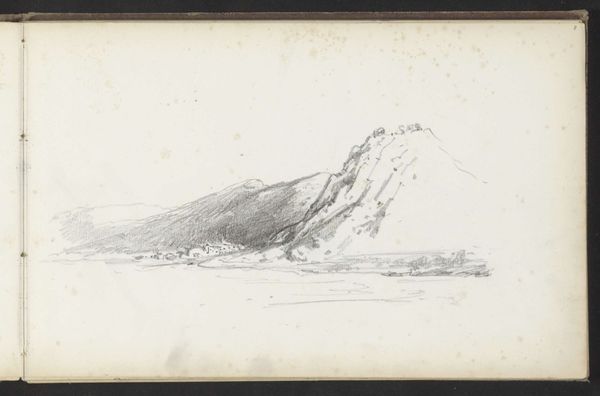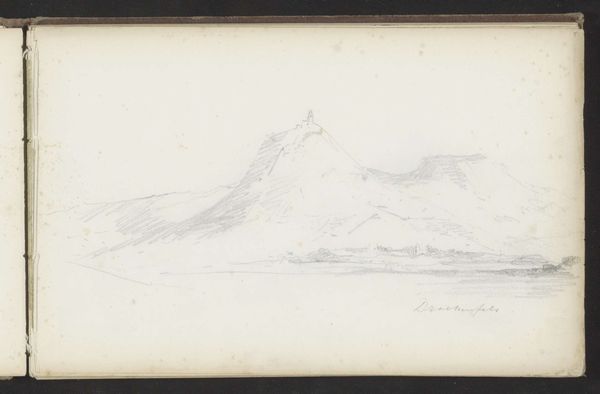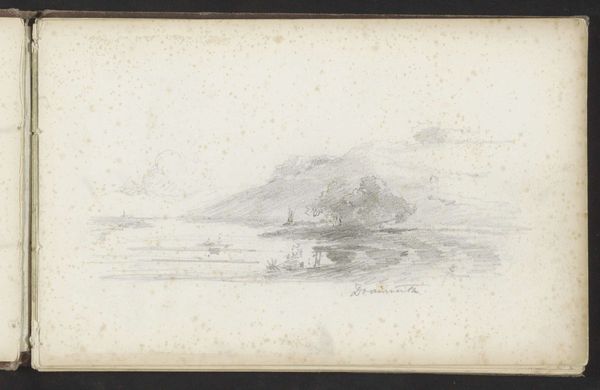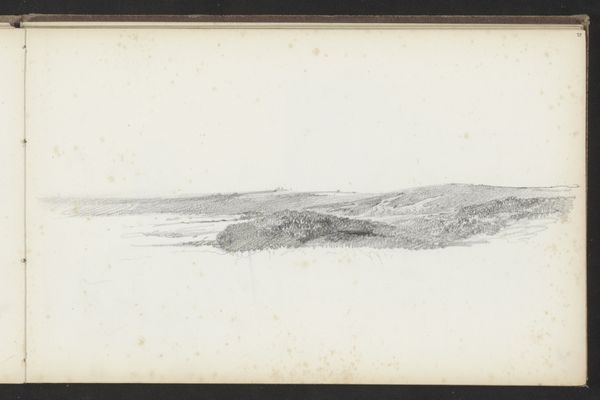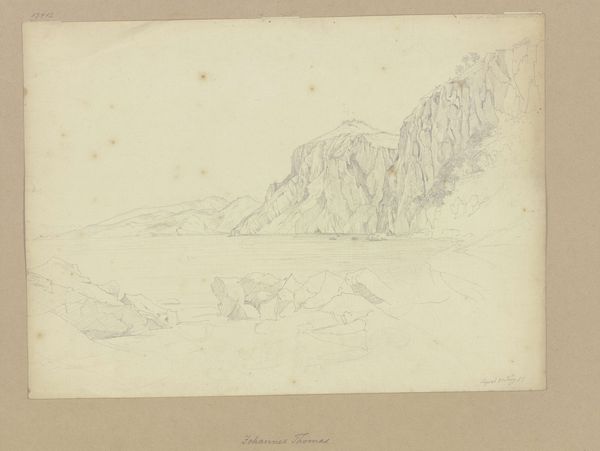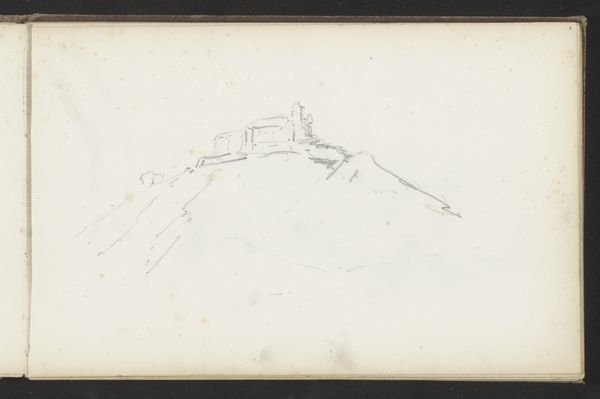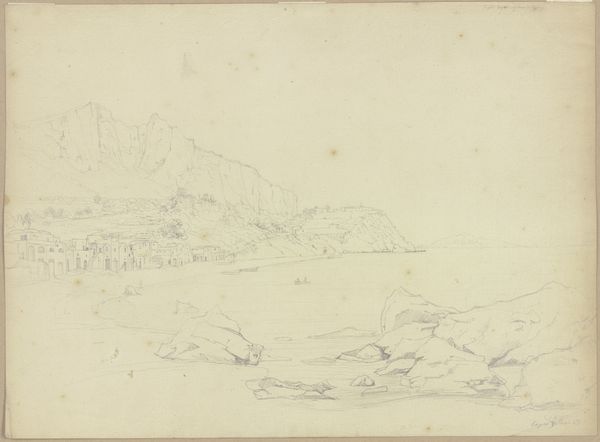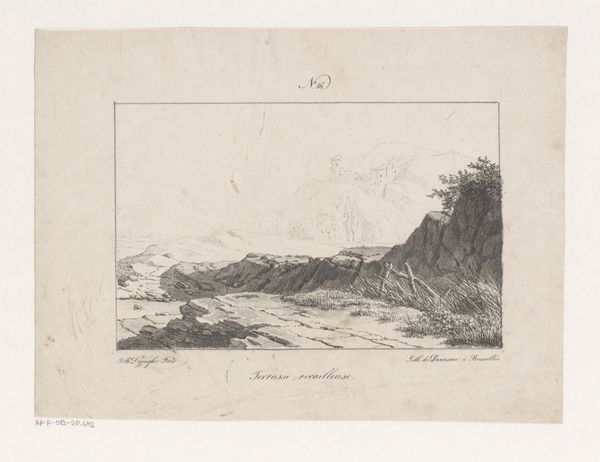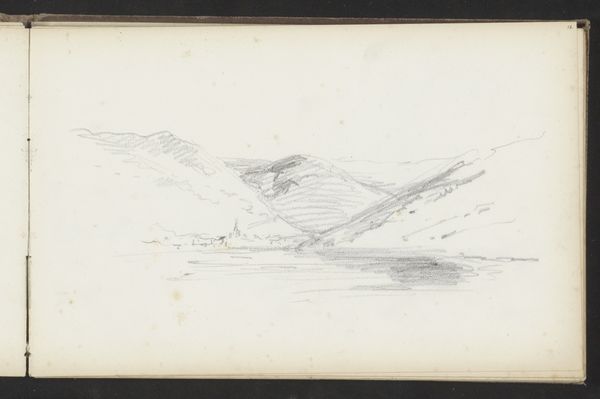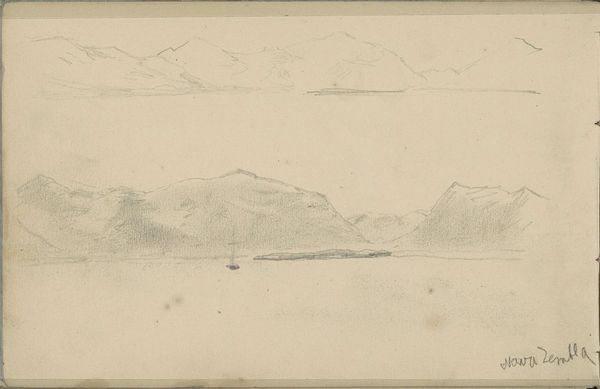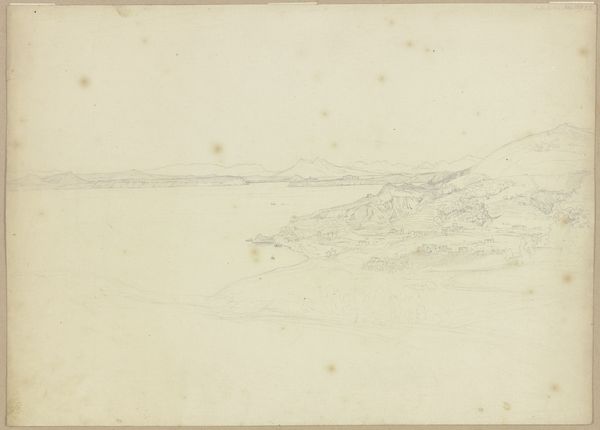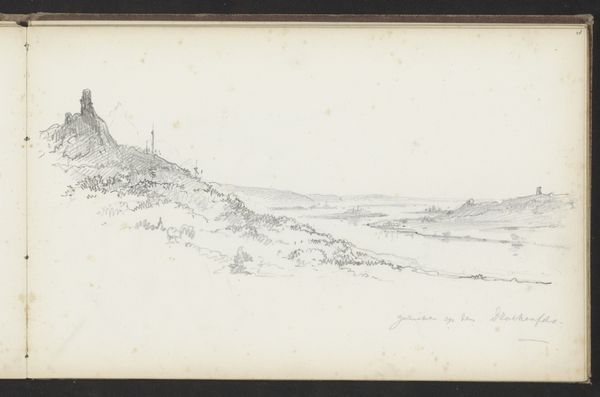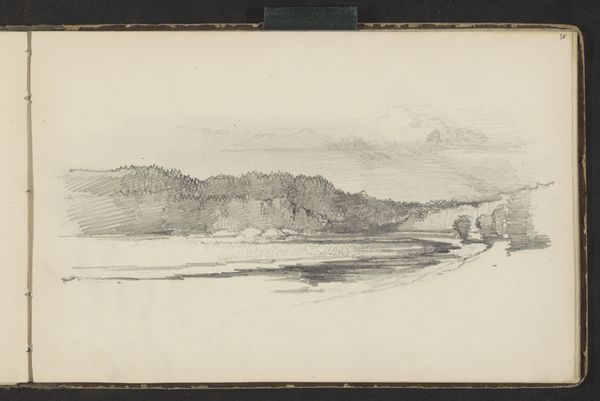
Copyright: Rijks Museum: Open Domain
Editor: This is "Huizen tussen bergen aan de Rijn," or "Houses between Mountains on the Rhine," a pencil drawing by Maria Vos from around 1860 to 1865. It's currently held at the Rijksmuseum. It’s incredibly delicate. What catches your eye? Curator: What I find striking is the evident labor – the deliberate marks and pressure applied with the pencil. Look how Vos captures the texture of the mountainsides, possibly indicating different geological strata or vegetation. This work makes me consider the materials readily available and the social forces which lead to artistic expression of the Rhineland’s rapid industrialization at that time. It contrasts with the idyllic setting depicted. Editor: So, it's less about the pretty scenery and more about what the materials tell us? Curator: Precisely. The romantic depiction belies an underlying narrative. Pencil wasn't always as ubiquitous as it is today. Its availability connects to larger trends of manufacturing and commerce. Consider how access to this technology facilitated art creation, shaping artistic styles and enabling the visualization and consumption of such scenes for a wider audience. Editor: That's fascinating. I never really thought about pencils in that context! Does this change how we see her intention? Curator: It prompts us to broaden our perspectives. We are to move past simply observing its aesthetic qualities and start thinking critically. Were these scenes produced to celebrate natural beauty or, on the other hand, promote economic development through tourism? And, what impact do such activities have on the environment? These are pertinent questions to consider in our analysis of art history. Editor: I see your point. Thanks to that, now I'm considering both the subject of the landscape and how that subject came into being as a drawing on a page, all the economic and social contexts informing that act. Curator: Exactly, it's a constant dialectic. This way, by emphasizing process and social contexts, we unlock additional insights into art and culture.
Comments
No comments
Be the first to comment and join the conversation on the ultimate creative platform.
